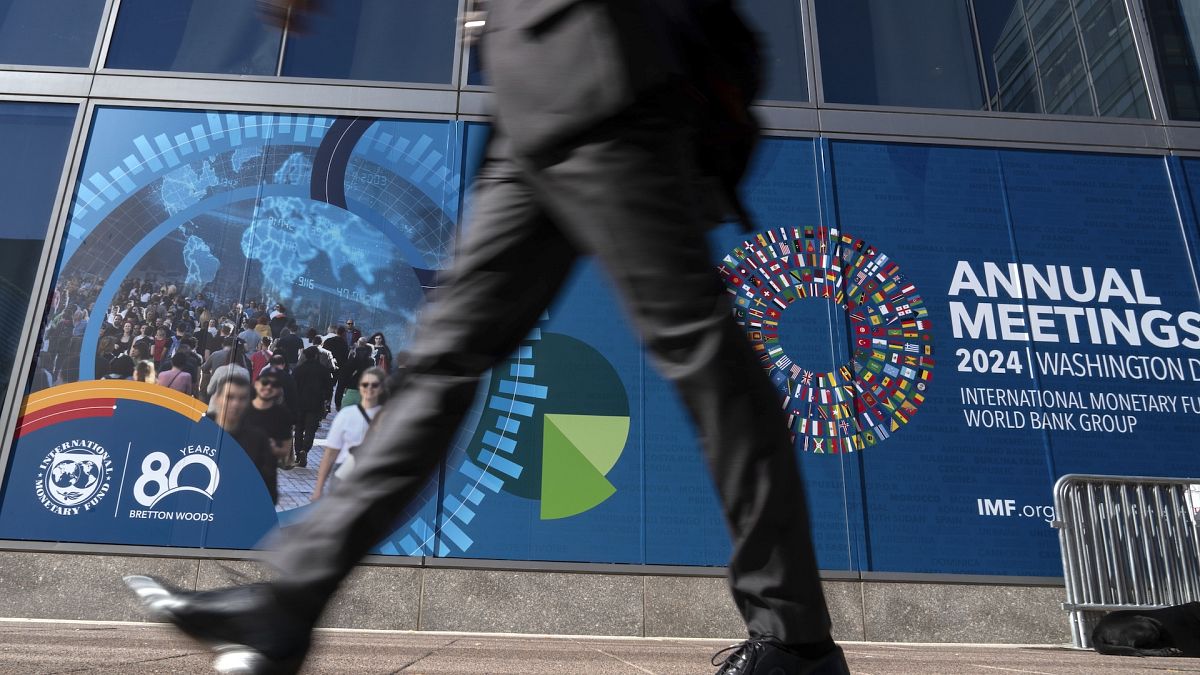The IMF warns of widening US-Europe growth divergences, calling for increased public investment in Europe. While US growth forecasts have been upgraded, the eurozone faces downgrades, with key economies like Germany and Italy struggling to keep pace.
The economic growth gap between the United States and Europe is expected to increase, the International Monetary Fund (IMF) has warned, calling for greater public investment in Europe to enhance productivity and maintain competitiveness.
In its October World Economic Outlook, the IMF highlighted stronger-than-expected growth in the United States, while the eurozone continues to face persistent economic challenges. Economists caution that, without a significant boost in investment – particularly in infrastructure and green technologies – Europe risks falling further behind in the global economy.
“Contrasts between the euro area and the United States are important”, the Fund noted.
Growth projections: US strength, eurozone struggles
For 2024, the IMF has upgraded its forecast for US economic growth to 2.8%, a 0.2%** increase on the July estimate. This upward revision reflects robust consumer spending and strong business investment, both of which continue to fuel the US economy. The forecast for 2025 has also been raised to 2.2%, marking an increase of 0.3% from earlier predictions.
In stark contrast, the IMF has downgraded the growth outlook for the euro area. The eurozone is now projected to grow by just 0.8%** in 2024, a 0.1% decrease compared to July’s outlook. For 2025, the euro area’s growth is expected to pick up slightly to 1.2%, but the forecast has been reduced by 0.3%.
Despite the positive outlook for the US, the IMF anticipates a slowdown in growth to 2.2% in 2025, as fiscal policies tighten and the labour market cools.
Major EU economies: Germany and Italy to underperform
Among Europe’s largest economies, Germany and Italy are projected to significantly underperform. Germany’s economy is forecast to contract by 0.3% in 2024, with growth flatlining at 0% in 2025. Italy, on the other hand, is expected to grow by 0.7% in 2024, unchanged from July’s estimates, with a slight decline to 0.6% in 2025.
“Persistent weakness in manufacturing is weighing heavily on growth for countries such as Germany and Italy,” the IMF stated, pointing to ongoing strains in industrial output and real estate.
While Italy is expected to benefit from the EU-financed National Recovery and Resilience Plan, Germany faces the combined pressures of fiscal consolidation and a sharp decline in property prices, both of which are expected to dampen its economic performance.
In contrast, France is projected to maintain stable growth of 1.1% in both 2024 and 2025, although the forecast for 2025 has been slightly downgraded by 0.2%.
Spain stands out as a top performer, with its growth forecast for 2024 revised up by 0.5% to 2.7%, and a steady 2.9% growth anticipated in 2025.
Calls for higher EU public investments
To tackle Europe’s sluggish growth, the IMF is calling for an increase in public investment across the European Union.
A report led by Mario Draghi, entitled: “The Future of European Competitiveness”, highlights the need for enhanced spending, particularly in infrastructure, green technologies, and productivity-enhancing projects.
The Draghi report offers a “clear-eyed assessment of the diminished prospects in the region – and the associated challenges,” the IMF stated.
The Fund’s analysis supports these findings, suggesting that a 1.5% rise in public investment from 2025 to 2030 could boost eurozone GDP by up to 2.5% above baseline projections by 2030.
This surge in investment would be financed through a combination of higher deficits and reallocation of existing government spending. The IMF projects that such a strategy could significantly raise productivity, attract private investment, and help limit inflationary pressures.
Although inflation in the eurozone could rise by about 40 basis points over the 2025–2030 period due to increased public capital spending, the IMF suggests that the long-term benefits of higher growth and productivity would outweigh these inflationary risks.
Diverging growth trends: Europe at risk
As the economic divergence between the United States and the eurozone continues, economists are urging European policymakers to address underlying structural challenges.
While the US is expected to maintain its growth momentum, Europe faces a tougher road ahead.
Without substantial increases in public investment – especially in critical sectors such as green energy and digital infrastructure – Europe risks entering a prolonged period of weak growth and economic stagnation.
Checkout latest world news below links :
World News || Latest News || U.S. News
The post US-Europe economic growth divergences to widen further, IMF warns appeared first on WorldNewsEra.

